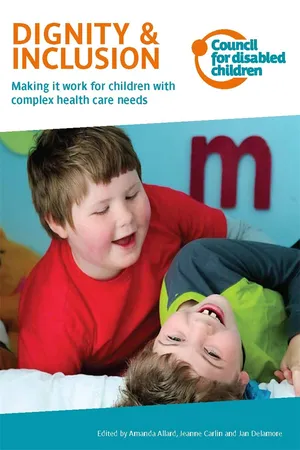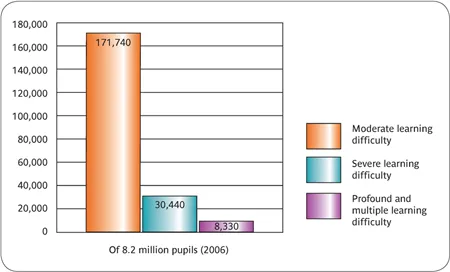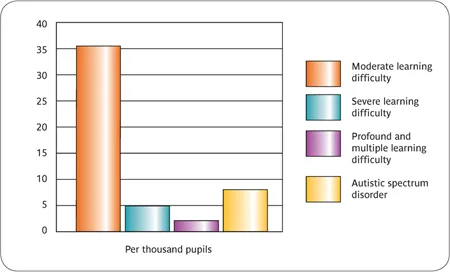![]()
1. Introduction
This publication will help all service providers to ensure that disabled children and young people with additional support needs can access services and lead a life as part of their local community. The process of ensuring that disabled children are supported in a safe and inclusive way applies to arrangements made using direct payments and other forms of personalised budgets. The information draws on examples of good practice from across the country. These examples illustrate the ways in which all agencies can work together to develop local policies and procedures to ensure that the needs of this group of children are met in a coordinated and child-centred way.
This is one of two companion publications that detail good practice in both inclusive and specialist settings across education, health, social care and leisure. The two publications form updated versions of Including Me (Carlin 2005) and Dignity of Risk (Lenehan and others 2004). The main difference between these two publications is the group of disabled children covered by each.
Making it work for children with complex health care needs focuses on children who require clinical procedures, children who require moving and handling and children who need intimate care as part of their personal support.
Making it work for children with behaviour that challenges focuses on those children who have behaviour that is challenging as a result of either a severe learning disability and/or autism.
Define the children
Dignity and Inclusion: Making it work for children with complex health care needs is concerned with children and young people from birth to 18 years of age who require additional support to meet their needs. However, there will be young people up to the age of 25 to whom this guidance applies. This includes:
•Children with complex health needs. These children will need long-term and continuing support, often including clinical procedures, in order to sustain life and to ensure that they maintain optimal health while accessing services and activities. Many children within this group will depend on the use of a medical device or health intervention such as gastrostomy or ventilator.
•Children who require moving and handling. Children with physical impairments may, at times, require help with moving and handling. Some children who have behaviour that challenges will need moving and handling – examples from this group of children will be covered in Making it work for children with behaviour that challenges.
•Children who require intimate care. Intimate care encompasses areas of personal care that most children usually carry out for themselves, but some are unable to do because of an impairment or disability. Disabled children and young people might require help with eating and drinking or other aspects of personal care such as washing, dressing and toileting. Some may also require help with changing colostomy or ileostomy bags, managing catheters or other appliances, and some may require the administration of medication rectally.
The book focuses on the needs of children with physical disabilities or impairments, profound and multiple learning disabilities (PMLD) or multiple impairments and children with complex health needs. For example:
•Mobility – children with physical disabilities or impairments who use wheelchairs or have restricted mobility.
•Breathing – children with tracheotomies who require regular airway suctioning.
•Eating and drinking – children who require feeding via a gastrostomy tube.
•Continence – children who require assistance with bladder emptying and need regular catheterisation.
•Susceptibility to infection – children receiving steroid therapy or children with low immunity.
This list is provided for illustrative purposes only and is not comprehensive.
Numbers of children
In a typical school-age population of 1,000 children:1
•there will be approximately 80 children with asthma*
•between one and two children will have type 1 diabetes**
•between three and five children will have epilepsy***
•approximately 15 children will have a peanut allergy****
•three children will have been diagnosed with a life-limiting or life-threatening illness*****.
Based on the figures provided above the inclusion of children with high support needs is likely to impact on most services. Disabled children do not fit neatly into one category or another, nor are definitions of disabilities or conditions sufficiently well defined to make it possible to provide precise details of the number of disabled children in the population who will fall within the remit of this book. However, the latest figures from the Office of Disability Issues (ODI) indicate that 9 per cent of the child population are regarded as disabled using the definition of disability in the Equality Act (2010).2 The research information outlined below indicates the prevalence of children with more complex disabilities and health needs has increased substantially over the past 20 years and therefore the population of children using services is radically different from 10 years ago.
Two recent studies (Emerson and Hatton 2008a, 2008b) have given figures based on the information collected on special educational needs (SEN) of all children in maintained schools and non-maintained special schools.
Of the 8.2 million pupils (in January 2006), 171,740 (2.1 per cent) had an identified primary SEN associated with moderate learning difficulty (MLD), 30,440 (0.4 per cent) had an identified primary SEN associated with severe learning difficulty (SLD) and 8,330 (0.1 per cent) had an identified primary SEN associated with profound and multiple learning difficulty (PMLD) (Emerson and Hatton 2008a). The researchers state that this is likely to be an underestimate and does not include pre-school age children. Using the 2008 school census (Emerson and Hatton 2008b) the estimates per 1,000 children were:
These figures do not include children with physical disabilities nor do they specifically cover children with epilepsy. Some children with learning disabilities and the majority of those with PMLD will also have physical disabilities and many of them will have epilepsy. Epilepsy is the most common neurological condition affecting one in every 200 children and young people (Young Epilepsy 2011). However, the majority of these children will have their seizures controlled with medication. The number of children with cerebral palsy has remained the same over the past 40 years – incidence of 2-2.5 per 1,000 live births. However, the numbers of children with ‘more severe forms of cerebral palsy are increasing, mainly in the group born prematurely as a result of the greater survival of these children to an age when cerebral palsy can be diagnosed’ (Eunson ...


